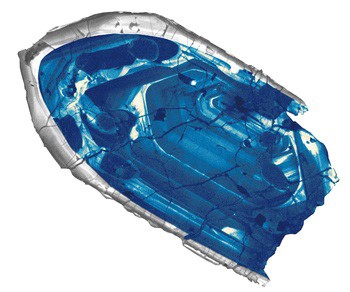
Credit: John Valley, University of Wisconsin–Madison
You may have seen, years ago, commercials for cubic zirconia—a synthetic diamond substitute —and been unimpressed.
But naturally occurring zircon crystals, made from zirconium silicate, are another story.
Zircon crystals are extremely durable, resistant to melting, cracking, dissolving, or crushing, and able to withstand repeated cycles of metamorphism and erosion.
This makes them the longest lasting—and oldest—minerals on Earth.
If that’s not impressive enough, they also have a natural clock within them.
Uranium atoms have the same charge as zirconium atoms so they’re able to sneak into zircon crystals in trace amounts.
The uranium decays radioactively into lead over time, and the ratio of uranium to lead in a zircon crystal can precisely tell its age.
Recently scientists found tiny zircon crystals from western Australia that were 4.38 billion years old.
Bear in mind that Earth itself is about 4.5 billion years old, so these crystals hold important clues to its beginning.
Analysis of oxygen isotopes within the crystals revealed they formed in a water-rich magma. Traces of titanium point to cooling at temperatures found in plate boundary subduction zones.
These findings suggest that Earth had more water—and active plate tectonics—hundreds of millions of years earlier than currently thought.
All that from a tiny, but very impressive, crystal.
Background
Synopsis: The oldest known mineral fragment formed on Earth is a zircon crystal that was found on a sheep ranch in the Jack Hills Range of western Australia. This tiny, incredibly durable time capsule tells a 4.374-billion-year-old story recorded in its layers, each with its own radioactive clock. Zircon grains around the globe preserve Earth and planetary history in their nanoscopic diaries for geochronologists to read.
- Zircon, or zirconium silicate, chemical formula ZrSiO4, is a naturally forming silicate mineral that occurs in rocks of all ages and types around the globe.
- While zircon gemstones that may be up to a few centimeters long form in pegmatites, carbonatites and hydrothermal deposits, and have been used as jewelry for more than 2,000 years, most zircon crystals are a millimeter or less in length.
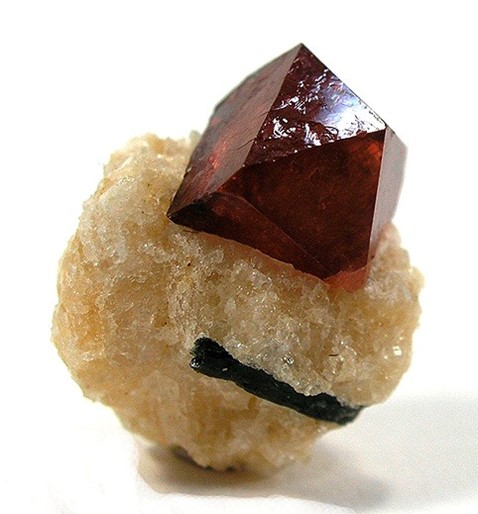
This lustrous, cognac-colored crystal of zircon is 0.7 x 0.6 x 0.4 inches (1.8 x 1.5 x 1.1 centimeters), resting on a tan matrix of calcite.
Credit: Rob Lavinsky, iRocks.com, via Wikimedia Commons - With a specific gravity of 4.6 to 4.7, nearly twice that of most other detrital grains, zircons are easily separated and concentrated.
- Zircon is concentrated from sandy heavy mineral deposits, especially in Australia and South Africa, and is used to produce:
- Zirconium (Zr), a silvery white metal with the atomic number 40, prized for its resistance to heat and corrosion.
- Zirconia (ZrO2), a bright white crystalline oxide of zirconium (rarely found in nature as baddeleyite).
- Cubic zirconia, an inexpensive synthetic gemstone that looks like diamond.
- While zircon gemstones that may be up to a few centimeters long form in pegmatites, carbonatites and hydrothermal deposits, and have been used as jewelry for more than 2,000 years, most zircon crystals are a millimeter or less in length.
- Tiny zircon crystals are prized by scientists for a few reasons:
- Zircon forms when zirconium, silicon and oxygen crystallize in igneous magma or metamorphic rocks. Each heating and cooling cycle experienced by the crystals are recorded as additional layers coating the crystal, just like tree rings.
- Uranium is nearly twice the size of zirconium, but its similar charge allows radioactive U atoms to sneak into places in the crystal structure normally reserved for Zr. They decay steadily into daughter products like lead (Pb) over many millions of years, so the ratio of U to Pb can be used to estimate how long ago the zircon layers crystallized, creating a radioactive clock.
- Zircon crystals are particularly resistant to melting, dissolving, cracking, and eroding, remaining intact through repeated cycles of violent mountain building, interspersed with erosional and depositional events.
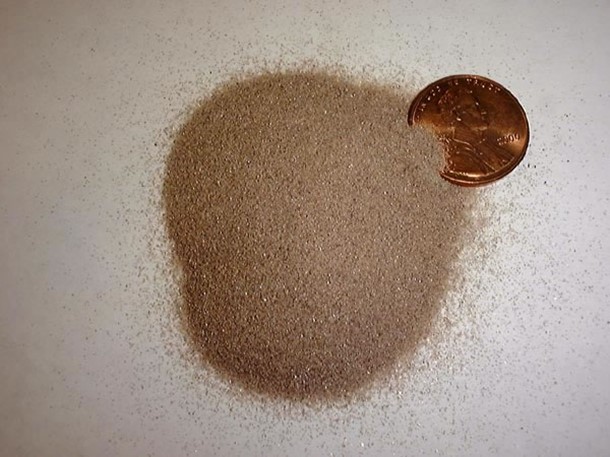
Typical zircon sand with a U.S. penny for scale.
Credit: USGS and Mineral Information Institute, public domain, via Wikimedia Commons
- In 2014, researchers from the University of Wisconsin–Madison studied zircons extracted from rocks in the Jack Hills Range around 500 mi (800 km) north of Perth, Australia.
- Dr. John Valley led the study that sorted through 100,000 microscopic zircons from the Jack Hills ranging in age from three to more than four billion years old.
- Three tiny zircon crystals were found with an age of 4.374 ± 0.006 billion years—their cores had formed during early Earth’s Hadean Eon, which represents the first 500 million years of Earth’s formation.
- As uranium decays to lead, alpha particles may create crystal defects that could throw off the age measurements by altering the balance of uranium and lead in the crystals. Dr. Valley’s team used atom-probe tomography to evaluate the lead in one of the crystals atom by atom, demonstrating that any lead movement in this zircon crystal was at the nanometer scale and would be averaged out in the larger swaths typical of ion probe measurements. The ancient age was confirmed.
- The story revealed by the tiny Jack Hills zircon is astonishing. The crystals formed in Hadean magmas, cooled, were eroded, and buried, then were reheated, adding layers as they were squeezed back to the surface. Then they were eroded again and deposited in an alluvial fan delta more than three billion years ago and subsequently metamorphosed. This old crystal was found in a younger metaconglomerate.
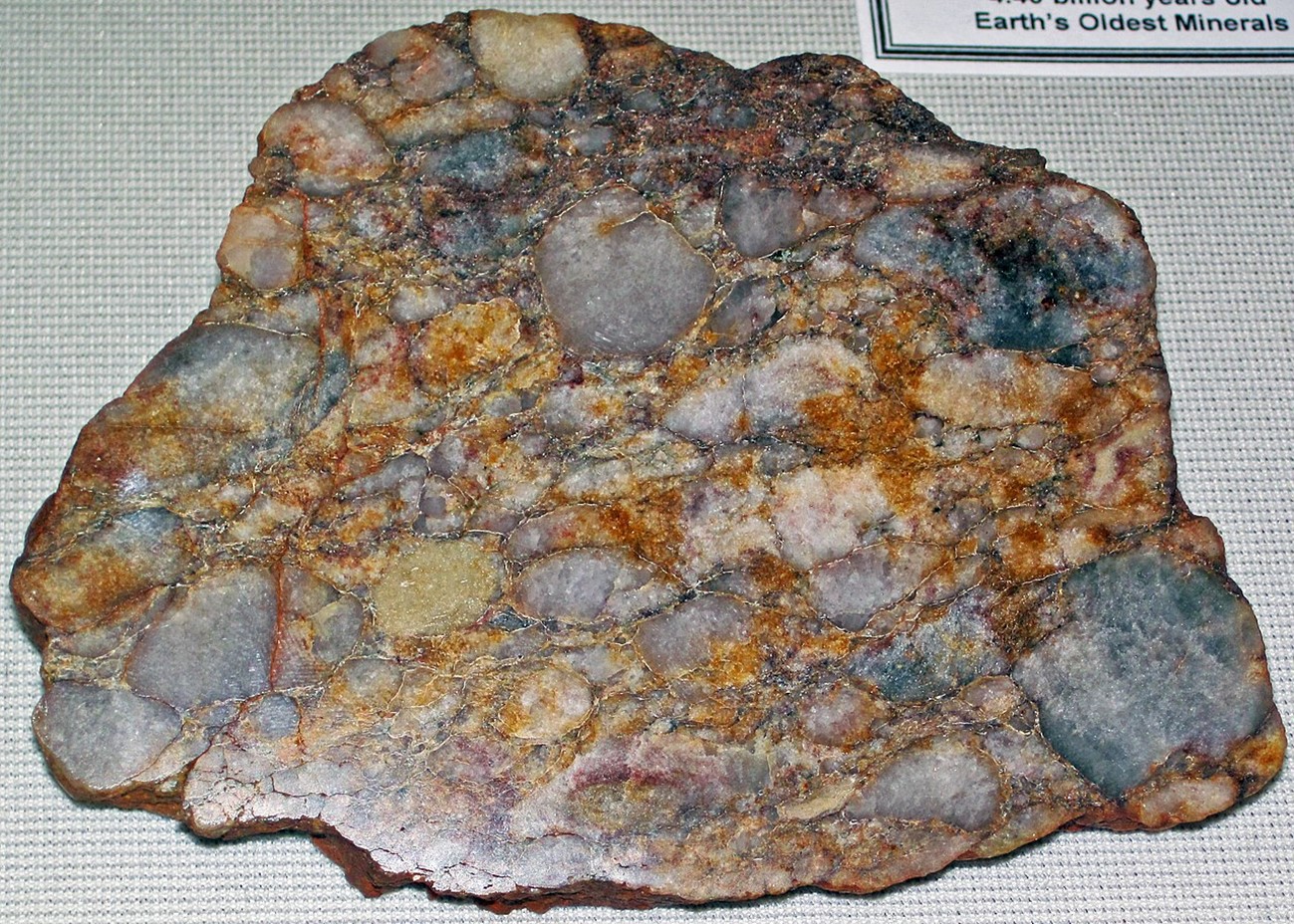
Polished cut of a specimen of Archaean (~3-billion-years-old) quartz-pebble metaconglomerate from the Jack Hills Quartzite in the Jack Hills of western Australia.
Credit: James St. John, via Wikimedia Commons - Fluid inclusions including gas within the ancient crystals have been sampled for oxygen isotopes suggesting their original Hadean magma was water-rich, more typical of Earth’s light felsic continental crust than its denser mafic oceanic crust.
- Trace elements like titanium suggest the crystals cooled at temperatures characteristic of subduction zones.
- Earth formed 4.54 billion years ago from a mixture of materials ranging from rocky meteors and icy asteroids to a Mars-sized object that collided with Earth to form our moon.
- The formation of felsic magma requires a water wet Earth, suggesting that the early Hadean magma oceans must have cooled very rapidly, in just about 165 million years.
- Maybe the Hadean was not that hellish.
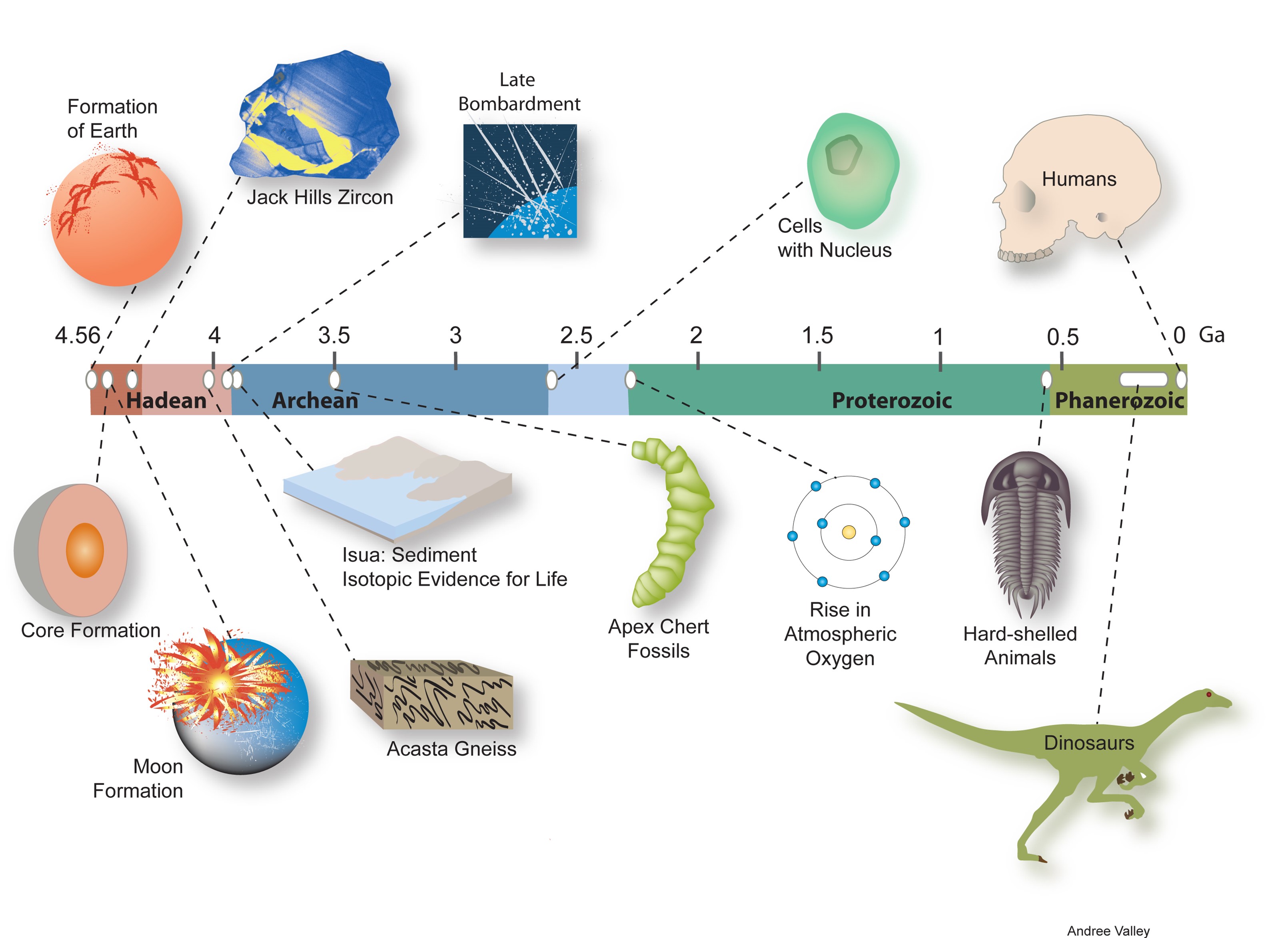
A timeline of the history of our planet places the formation of the Jack Hills zircon and a “cool early Earth” at 4.4 billion years. Ga is an abbreviation for billion years.
Credit: Andree Valley
- More recent studies suggest the original rock in which the Jack Hills zircon crystallized was similar to andesite, typical of modern subduction zone magmas, like those produced in the Andes.
- This finding would suggest that plate tectonics may have started much earlier in Earth’s history than most researchers previously estimated.
- Other studies have found similar settings for 3.8 billion year old zircon crystals.
- In 2011, a meteorite was discovered in the Moroccan desert and named “Black Beauty.”
- It was determined to be from Mars and contained zircon crystals with an age of 4.47 billion years—even older than the Jack Hills zircon crystal that originated on Earth.
- This finding and analysis of other particles in the meteorite suggests that Mars may also have cooled very quickly after formation of our solar system.
- Zircons of all ages are used by many scientists to sort out the history of geological materials. These little gems are real gifts to the scientific world!

